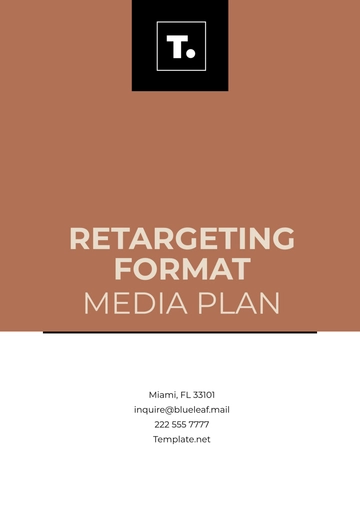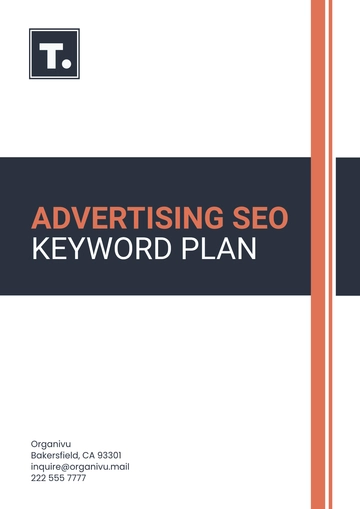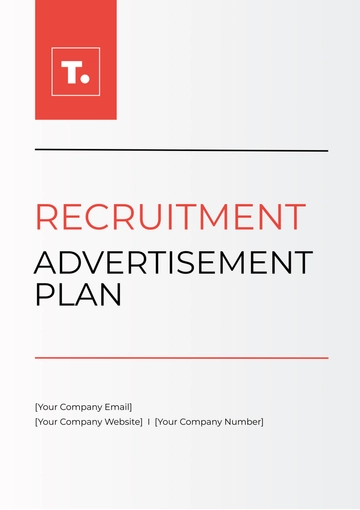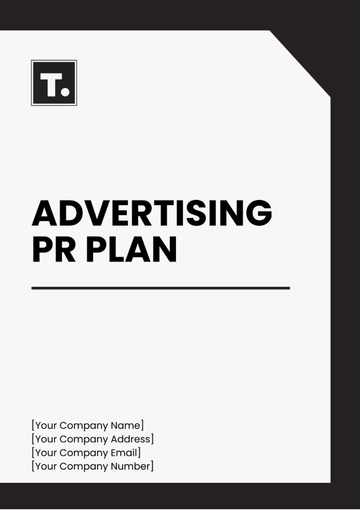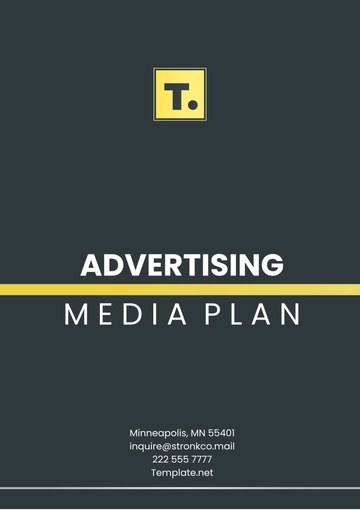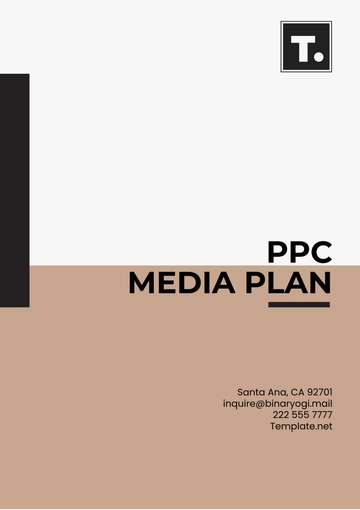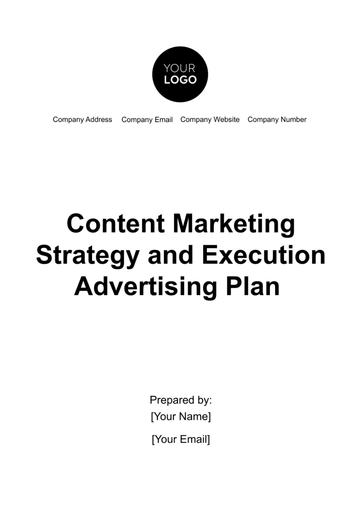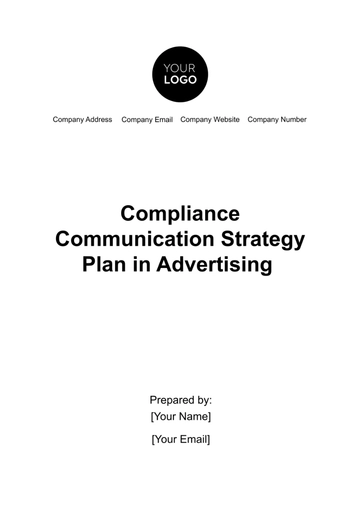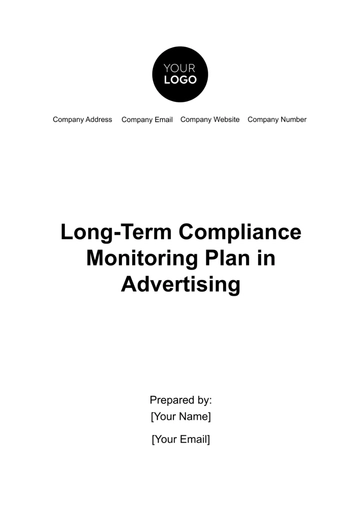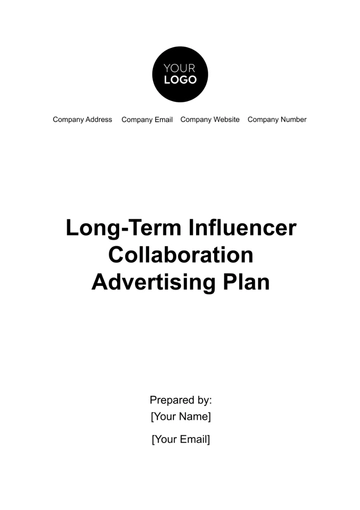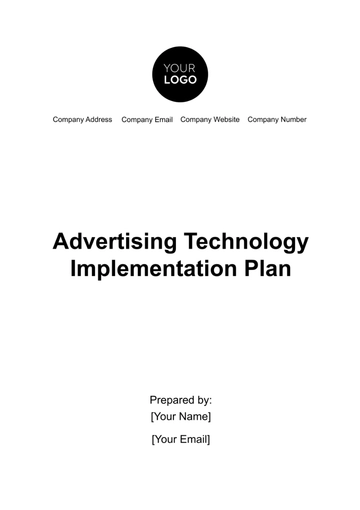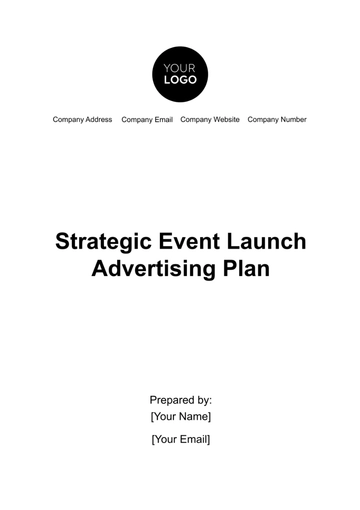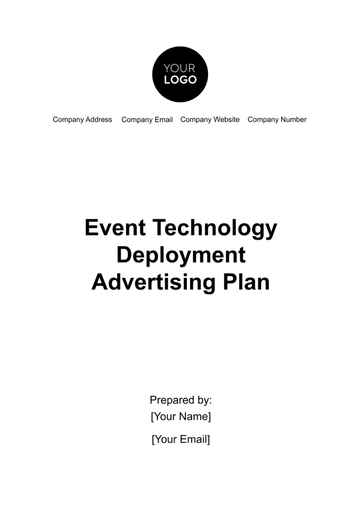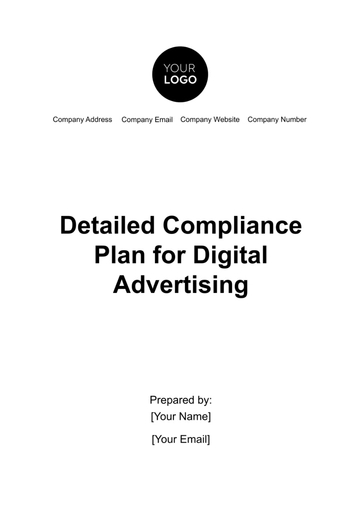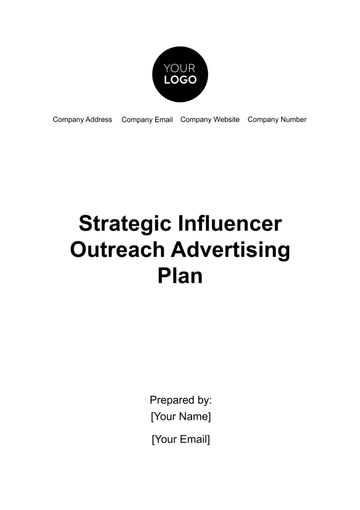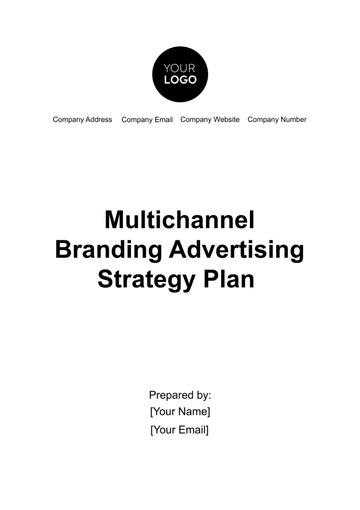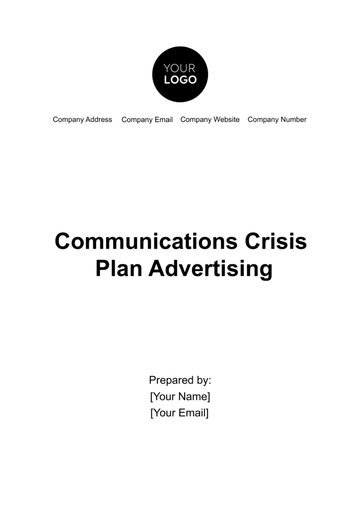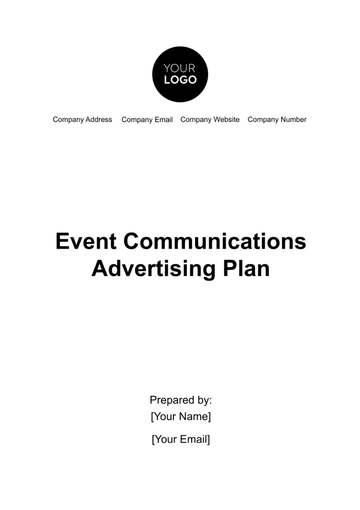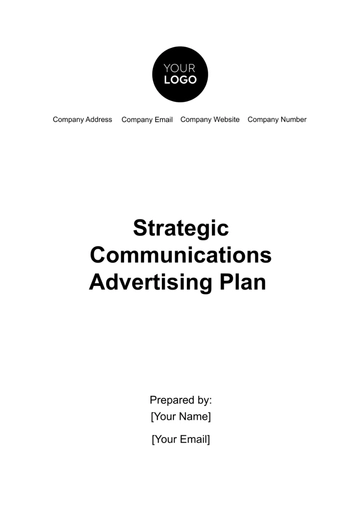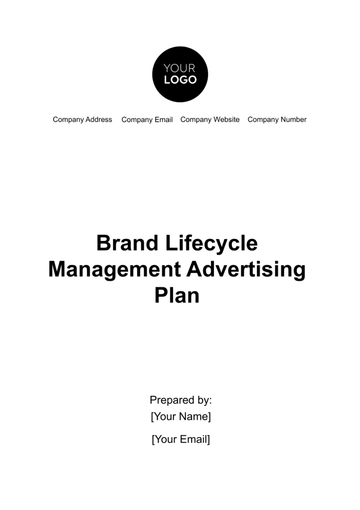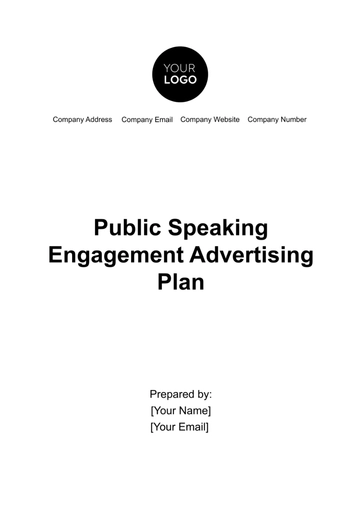Free Media Buying Plan for PR Campaigns in Advertising
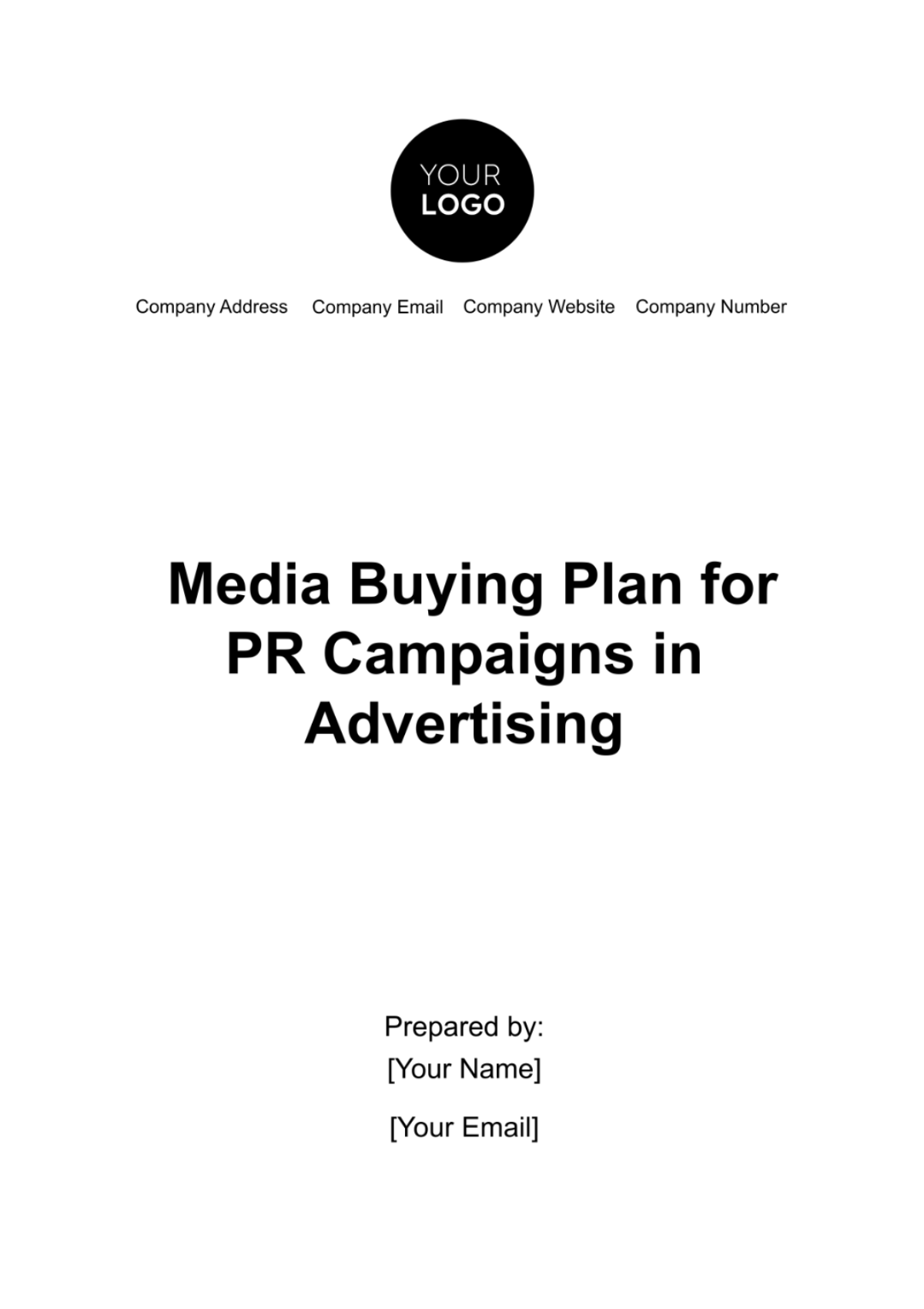
Introduction
Staying ahead of trends and effectively reaching target audiences is crucial for every business in the industry. [Your Company Name] recognizes the importance of this and has formulated a strategic media buying plan that aligns with the latest market insights and consumer behaviors. This plan outlines our approach to media buying for PR campaigns, aiming to optimize brand exposure and audience engagement across various media channels.
Executive Summary
The primary goal of this plan is to amplify the visibility of [Your Company Name] and foster meaningful connections with our target demographics. By carefully selecting and investing in various media channels, we intend to create an impactful advertising presence that reaches and engages our audience at multiple touchpoints.
The Strategy
Our approach is multi-faceted, emphasizing the integration of digital, print, and broadcast media to create a diverse and effective campaign. We believe in a balanced media mix that leverages the strengths of each platform, ensuring maximum reach and engagement.
Digital Media Strategy: Prioritizing digital channels to capitalize on the growing online audience, with a special focus on mobile and social media platforms, to engage tech-savvy consumers.
Print Media Strategy: Targeting niche magazines and newspapers that align with the interests and values of our audience, ensuring quality over quantity in our print media placements.
Broadcast Media Strategy: Utilizing television and radio for their broad reach and ability to convey messages in a compelling audio-visual format, particularly during peak viewing and listening times.
Budget Overview: With a total budget of $500,000, we aim to allocate funds in a manner that ensures both efficient spending and optimal impact. The budget distribution is designed to reflect the media consumption habits of our target audience while also considering the cost-effectiveness and ROI potential of each media type.
Measurement and Adaptation: We believe in the power of data-driven decision-making. Our plan includes regular monitoring and analysis of campaign performance against Key Performance Indicators (KPIs). This data-centric approach allows us to make informed adjustments, ensuring the campaign remains agile and effective throughout its duration.
Target Audience Analysis
The following analysis delves into the demographic, psychographic, and behavioral insights of our primary audience. This profile serves as a guide for our overall marketing endeavors, ensuring that every message we craft resonates deeply with those we aim to reach.
1. Demographic Profile
a. Age Group: Primarily targeting individuals aged between 25-45 years, a demographic known for its purchasing power and openness to new ideas and brands.
b. Location: Focused on urban and suburban areas, where consumers are more likely to be exposed to diverse media channels.
c. Income Level: Concentrating on those with an income level above the national median, indicative of a higher disposable income and likelihood of engaging with paid media content.
d. Occupation: Professionals and entrepreneurs who are likely to value quality and innovation in the products and services they use.
2. Psychographic Profile
a. Lifestyle: Tech-savvy individuals who are keen on staying abreast of the latest trends in technology, fashion, and lifestyle.
b. Values: A strong inclination towards brands that demonstrate corporate social responsibility, sustainability, and ethical practices.
c. Interests: High interest in topics such as personal development, business innovation, and lifestyle enhancement.
d. Media Consumption Habits: Prefer digital and on-demand media, are active on social networks, and are responsive to influencer marketing.
3. Behavioral Insights
a. Purchasing Behavior: This group is known for researching products online before purchasing and is influenced by online reviews and social proof.
b. Brand Loyalty: They value quality and customer service and are willing to become repeat customers if their expectations are met.
c. Online Engagement: Highly engaged in online communities, forums, and social media platforms, often sharing opinions and reviews.
This analysis will guide the media buying decisions, guaranteeing that the strategies and platforms selected are in perfect alignment with the preferences and behaviors of our target audience.
Media Selection
This section of our plan presents a choice of media channels, each selected for its unique capacity to connect with our target audience. Our approach is not only multi-dimensional but also deeply informed by current trends and audience preferences. As we discuss our selections, it's evident that our commitment lies in creating a media mix that is as dynamic and multifaceted as the audience we seek to engage.
1. Digital Media
a. Social Media Platforms: Targeting platforms like Instagram, Facebook, and LinkedIn, based on their popularity among our demographic. We'll leverage Instagram for visual storytelling, Facebook for community engagement, and LinkedIn for B2B outreach.
b. Online News Portals: Collaborating with renowned online news portals that cater to business professionals and tech enthusiasts, ensuring our content is placed where our audience is most active.
c. Influencer Collaborations: Partnering with influencers who align with our brand values and have a significant following within our target demographic. These collaborations will include sponsored posts, product reviews, and joint marketing campaigns.
2. Print Media
a. Magazines: Focusing on niche magazines that cater to lifestyle, technology, and business interests of our target audience. This includes both industry-specific publications and general interest magazines with sections catering to our audience's preferences.
b. Newspapers: Selecting leading newspapers with a reputation for high-quality content. Emphasis will be on weekend editions and special supplements that are more likely to be read thoroughly.
3. Broadcast Media
a. Television: Investing in prime-time slots on national and local TV stations, specifically during popular shows and news hours that align with our audience's viewing habits.
b. Radio: Utilizing radio channels for morning and evening drive times, particularly those stations with programs focusing on business, technology, and lifestyle segments.
4. Emerging Media Channels
a. Podcasts and Webinars: Sponsoring popular podcasts and webinars that cater to our audience’s interests, offering both brand visibility and thought leadership opportunities.
b. Streaming Services: Exploring ad placements within popular streaming services, tapping into a growing market of cord-cutters who prefer online content.
5. Interactive and Experiential Media
a. Virtual Events: Participating in and sponsoring virtual events, conferences, and trade shows relevant to our audience.
b. Augmented Reality (AR) and Virtual Reality (VR): Developing immersive and interactive advertising content for platforms supporting AR and VR, to engage our tech-savvy audience uniquely.
Each media channel is selected for its reach and its ability to create engaging interactions with our target audience. By adapting both traditional and innovative channels, the company aims to create a comprehensive and dynamic advertising campaign that resonates across multiple touchpoints.
Media Schedule
[Your Company Name] adopts a dynamic and phased approach in scheduling media placements. This approach is to build momentum, engage the audience effectively, and reinforce our message over time.
Phase and Duration | Focus | Key Activities |
Launch and Awareness (Months 1-2) | High-impact placements for buzz creation | Intensive digital and broadcast media exposure |
Engagement and Interaction (Months 3-4) | Encouraging audience interaction | Interactive digital media, targeted print placements |
Reinforcement and Conversion (Months 5-6) | Convert interest into action | Retargeting, high-ROI channels focus, event sponsorships |
The schedule is structured with specific objectives and focused activities. It begins with a strong launch, followed by a period of nurturing audience engagement, and culminates in a push for conversion and reinforcement of the campaign's key messages.
Budget Allocation
This allocation is made to maximize reach and impact but also allows for agility in capitalizing on emergent media trends and audience insights. The budget is a blueprint for investing wisely and effectively in our campaign.
Media Type | Amount | Focus |
Digital Media | $337,500 | Versatile platforms, wide reach |
Print Media | $150,000 | Targeted, high-quality reach |
Broadcast Media | $112,500 | Broad reach, brand visibility |
Emerging Media Channels | $75,000 | Innovations in podcasts, streaming |
Interactive & Experiential Media | $75,000 | Engaging AR, VR, and virtual events |
The budget is divided, with the largest share allocated to digital media due to its high engagement and targeting capabilities. Print and broadcast media receive significant portions for their proven effectiveness in brand visibility. Emerging and interactive media are allocated funds to explore innovative advertising opportunities and to engage the audience in novel ways.
Digital Media Budget Distribution
[Your Company Name] is committed to optimizing its digital media spending, ensuring that it is strategically invested in platforms that promise maximum engagement. Our enhanced budget distribution is planned to capitalize on the strengths of various digital channels, aligning with our audience's media consumption habits.
Digital Platform | Amount | Engagement Goals |
Social Media Networks | $135,000 | 6% engagement rate |
Online News Portals | $101,250 | 4% click-through rate |
Influencer Collaborations | $67,500 | 12% engagement rate |
Search Engine Marketing | $33,750 | Increase in organic traffic |
The digital media budget is strategically allocated across different platforms. Each platform is chosen for its unique strengths, from the broad reach of social media networks to the targeted approach of influencer collaborations and the precision of search engine marketing.
Broadcast Media Coverage
[Your Company Name] aims to take leverage of television and radio to reach a broad audience. Our plan is structured to align with peak viewing and listening times, capitalizing on the wide reach and persuasive power of these traditional media channels.
Media Type | Time Slot | Estimated Viewership/Listenership |
National TV | Prime Time (8-10 PM) | 2,500,000 viewers |
Local TV | Evening (6-8 PM) | 600,000 viewers |
Radio | Morning Drive (7-9 AM) | 350,000 listeners |
The broadcast media coverage plan focuses on prime time slots for television and peak hours for radio, ensuring maximum exposure. The selection of programs and time slots is based on their popularity and relevance to our target audience, ensuring that our message is delivered effectively to a wide and engaged audience.
Print Media Schedule
Our enhanced print media schedule is designed to leverage the targeted reach and credibility of print publications, ensuring our message resonates with the audience in a tangible and impactful manner.
Publication Type | Cost per Insertion | Frequency |
National Magazines | $15,000 | Monthly |
Regional Newspapers | $9,000 | Weekly |
Industry Journals | $12,000 | Bi-Monthly |
The print media schedule focuses on high-impact placements in national magazines, regional newspapers, and industry journals. The frequency and cost are balanced to ensure consistent visibility while leveraging special features like full-page ads and prime placements for maximum impact.
Conclusion
"Your Company Name's" media buying plan represents a strategic combination of digital, print, and broadcast media, each chosen to maximize reach and engagement with our target audience. From the allocation of our digital media budget to the strategic scheduling in print and broadcast media. Our plan not only promises to elevate brand presence but also ensures a significant return on investment.
- 100% Customizable, free editor
- Access 1 Million+ Templates, photo’s & graphics
- Download or share as a template
- Click and replace photos, graphics, text, backgrounds
- Resize, crop, AI write & more
- Access advanced editor
Elevate your advertising strategies with Template.net's Media Buying Plan for PR Campaigns. This editable and customizable template, crafted with precision using our Ai Editor Tool, empowers you to create tailored media buying plans effortlessly. Streamline your PR efforts and maximize your advertising impact with Template.net's innovative solutions.
You may also like
- Finance Plan
- Construction Plan
- Sales Plan
- Development Plan
- Career Plan
- Budget Plan
- HR Plan
- Education Plan
- Transition Plan
- Work Plan
- Training Plan
- Communication Plan
- Operation Plan
- Health And Safety Plan
- Strategy Plan
- Professional Development Plan
- Advertising Plan
- Risk Management Plan
- Restaurant Plan
- School Plan
- Nursing Home Patient Care Plan
- Nursing Care Plan
- Plan Event
- Startup Plan
- Social Media Plan
- Staffing Plan
- Annual Plan
- Content Plan
- Payment Plan
- Implementation Plan
- Hotel Plan
- Workout Plan
- Accounting Plan
- Campaign Plan
- Essay Plan
- 30 60 90 Day Plan
- Research Plan
- Recruitment Plan
- 90 Day Plan
- Quarterly Plan
- Emergency Plan
- 5 Year Plan
- Gym Plan
- Personal Plan
- IT and Software Plan
- Treatment Plan
- Real Estate Plan
- Law Firm Plan
- Healthcare Plan
- Improvement Plan
- Media Plan
- 5 Year Business Plan
- Learning Plan
- Marketing Campaign Plan
- Travel Agency Plan
- Cleaning Services Plan
- Interior Design Plan
- Performance Plan
- PR Plan
- Birth Plan
- Life Plan
- SEO Plan
- Disaster Recovery Plan
- Continuity Plan
- Launch Plan
- Legal Plan
- Behavior Plan
- Performance Improvement Plan
- Salon Plan
- Security Plan
- Security Management Plan
- Employee Development Plan
- Quality Plan
- Service Improvement Plan
- Growth Plan
- Incident Response Plan
- Basketball Plan
- Emergency Action Plan
- Product Launch Plan
- Spa Plan
- Employee Training Plan
- Data Analysis Plan
- Employee Action Plan
- Territory Plan
- Audit Plan
- Classroom Plan
- Activity Plan
- Parenting Plan
- Care Plan
- Project Execution Plan
- Exercise Plan
- Internship Plan
- Software Development Plan
- Continuous Improvement Plan
- Leave Plan
- 90 Day Sales Plan
- Advertising Agency Plan
- Employee Transition Plan
- Smart Action Plan
- Workplace Safety Plan
- Behavior Change Plan
- Contingency Plan
- Continuity of Operations Plan
- Health Plan
- Quality Control Plan
- Self Plan
- Sports Development Plan
- Change Management Plan
- Ecommerce Plan
- Personal Financial Plan
- Process Improvement Plan
- 30-60-90 Day Sales Plan
- Crisis Management Plan
- Engagement Plan
- Execution Plan
- Pandemic Plan
- Quality Assurance Plan
- Service Continuity Plan
- Agile Project Plan
- Fundraising Plan
- Job Transition Plan
- Asset Maintenance Plan
- Maintenance Plan
- Software Test Plan
- Staff Training and Development Plan
- 3 Year Plan
- Brand Activation Plan
- Release Plan
- Resource Plan
- Risk Mitigation Plan
- Teacher Plan
- 30 60 90 Day Plan for New Manager
- Food Safety Plan
- Food Truck Plan
- Hiring Plan
- Quality Management Plan
- Wellness Plan
- Behavior Intervention Plan
- Bonus Plan
- Investment Plan
- Maternity Leave Plan
- Pandemic Response Plan
- Succession Planning
- Coaching Plan
- Configuration Management Plan
- Remote Work Plan
- Self Care Plan
- Teaching Plan
- 100-Day Plan
- HACCP Plan
- Student Plan
- Sustainability Plan
- 30 60 90 Day Plan for Interview
- Access Plan
- Site Specific Safety Plan

